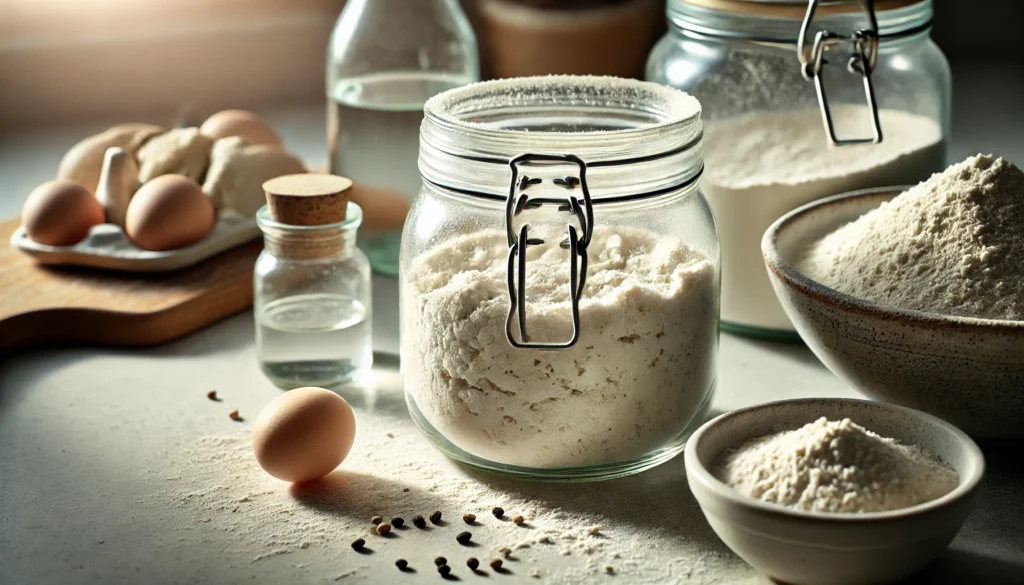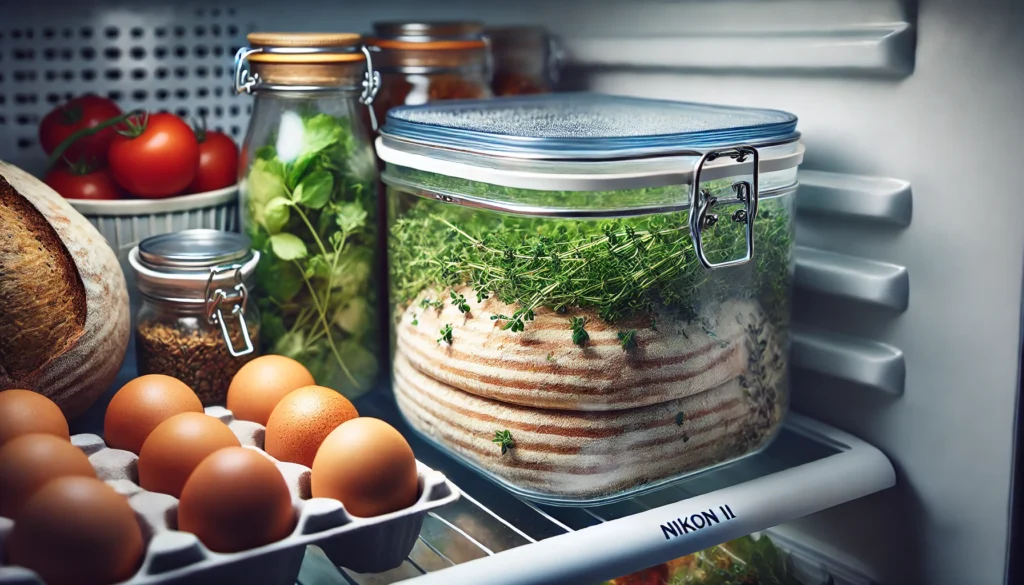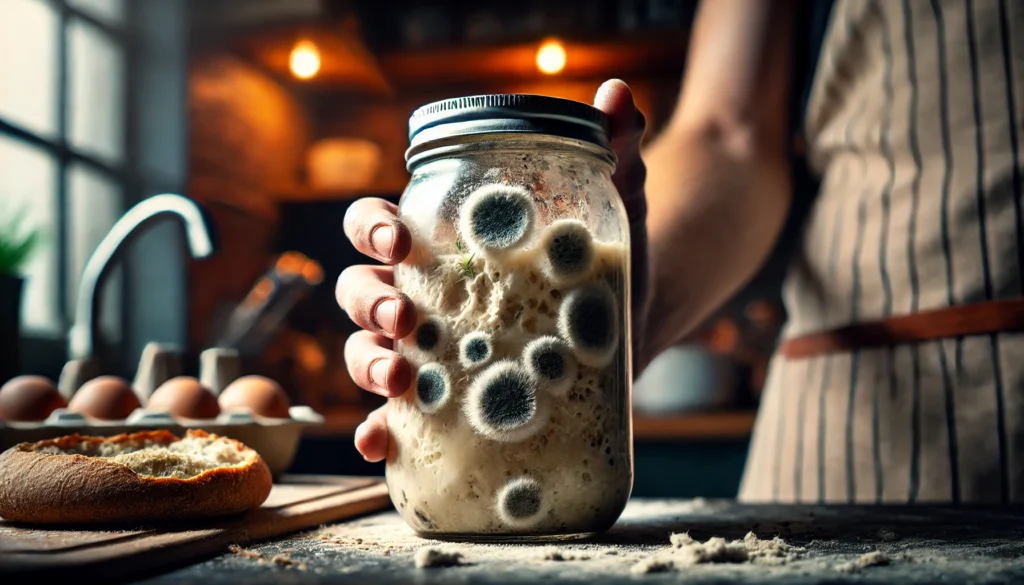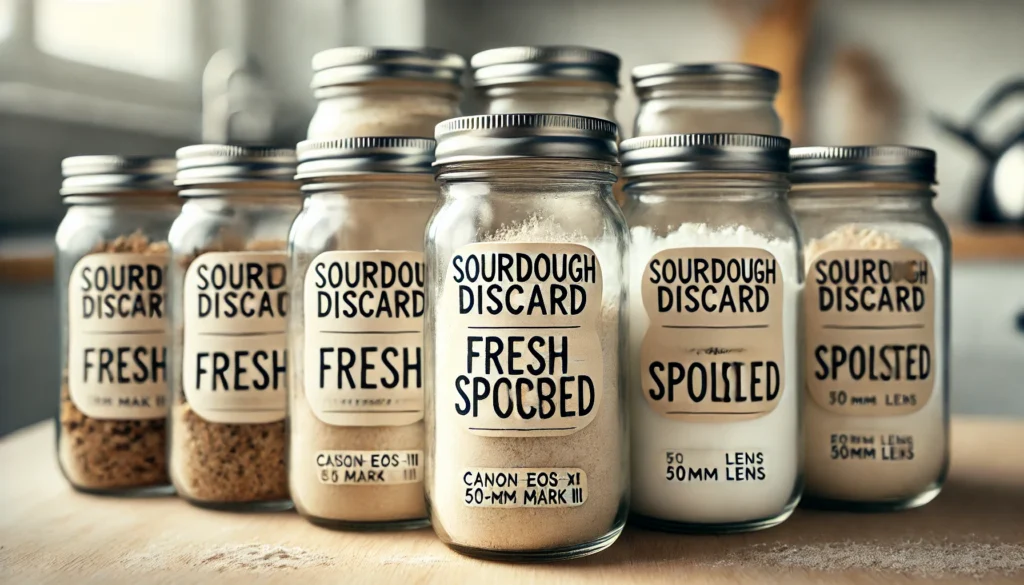
Managing a sourdough starter can be rewarding, but it often raises a key question: When should you throw out a sourdough discard? Knowing the right time to discard is crucial for maintaining a healthy starter and ensuring successful baking. This guide will walk you through everything you need to know about sourdough discard, from its life cycle and storage tips to recognizing when it’s time to part ways. We’ll also explore creative ways to use your discard, ensuring none of it goes to waste. Let’s dive in.
Understanding Sourdough Discard

Introduction to Sourdough Discard
So, what exactly is sourdough discard? It’s the portion of your starter you remove during feeding. To keep your starter healthy, you regularly add fresh flour and water. The discard is the excess starter you remove to prevent it from growing too large. But, when should you throw out a sourdough discard? Instead of tossing it too soon, consider using it in various tasty recipes. Knowing when you should throw out sourdough discard is key to maintaining a healthy starter.”
Sourdough discard reduces food waste and adds a unique tang to different dishes. However, it doesn’t last forever. So, when should you throw out sourdough discard? Before we explore that, let’s first understand its role in the life cycle of a sourdough starter.
The Life Cycle of a Sourdough Starter
Understanding the life cycle of your sourdough starter is key to mastering sourdough baking. A sourdough starter consists of a mix of flour and water that hosts wild yeast and lactic acid bacteria. These microorganisms feed on the sugars in the flour, producing carbon dioxide, which helps your bread rise.
Every time you feed your starter, you remove some of it to make room for fresh flour and water. This removed portion is sourdough discard. While it no longer actively bubbles, it still contains valuable flavors and can enhance various recipes. However, as it ages, its flavor grows more acidic, and it may develop an unpleasant odor.
A fresh discard maintains a tangy flavor, but as it ages, the increasing acidity can overwhelm the more subtle flavors. Timing plays a crucial role in deciding whether to use or toss your discard.
Nutritional and Flavor Profile of Sourdough Discard
What does sourdough discard taste like? When fresh, it offers a mild tang, similar to buttermilk or yogurt. However, as it ages, it becomes increasingly sour due to the build-up of lactic acid and other fermentation byproducts. These changes can significantly impact the flavor of any recipe you use it in.
Nutritionally, sourdough discard remains valuable. It’s rich in beneficial bacteria and yeast, which aid digestion. However, the longer it sits, the more its nutritional value decreases. Fresh discard works best in recipes where you desire a subtle tang, while older discard suits dishes that can handle a stronger, more pronounced sour flavor.
Proper Storage of Sourdough Discard

How to Store Sourdough Discard
Storing sourdough discard properly is essential to keep it fresh and usable for as long as possible. The way you store your discard impacts its flavor, texture, and overall usability in recipes.
Short-term Storage: Room Temperature vs. Fridge
If you plan to use your sourdough discard within a few days, you can store it at room temperature. However, you should keep it in a container that allows for some airflow, as this prevents gas buildup from fermentation. Be cautious, though, as storing at room temperature can accelerate the fermentation process, making the discard sourer and more acidic.
For longer storage, the fridge is your best option. When kept in the fridge, sourdough discard remains dormant, slowing down the fermentation process. This method keeps your discard fresh for up to a week or more, depending on its initial freshness. Remember to use a container with a loose lid to allow gases to escape.
Long-term Storage: Freezing Sourdough Discard
If you need to store sourdough discard for a more extended period, freezing is the way to go. Frozen discard can last for several months without significant loss of quality. To freeze, portion your discard into small, usable amounts and store them in airtight containers or freezer bags. When you’re ready to use it, thaw the discard in the fridge overnight. Keep in mind that freezing can slightly change the texture, but it’s still perfect for most recipes.
Best Containers for Storage
Choosing the right container for storing your sourdough discard is crucial. A container that is airtight yet allows some air circulation is ideal. Mason jars, plastic containers with loose lids, or even glass jars with breathable covers work well. Avoid containers with tight-fitting lids, as the gas buildup can cause pressure and potentially crack the container.
Signs Your Sourdough Discard Has Gone Bad
Knowing when sourdough discard has gone bad is critical for both your health and the success of your recipes. Discard that has turned should be thrown out immediately to avoid contaminating your starter or ruining your dishes.
Visual Signs: Mold, Unusual Colors
One of the first things to watch for is mold. Mold can appear as fuzzy spots in various colors, such as white, green, or black. If you notice mold, discard the entire batch immediately. Additionally, if your discard develops unusual colors, such as pink, orange, or red streaks, it’s a sign of spoilage and should be thrown out.
Smell and Texture Changes
Fresh sourdough discard typically has a tangy, slightly yeasty smell. However, if it starts to smell foul, like rotting food or strong alcohol, it’s time to discard it. Similarly, changes in texture can indicate spoilage. Discard should have a thick, pancake-batter-like consistency. If it becomes excessively runny, slimy, or sticky, it’s no longer good to use.
The Role of Acidity and Alcohol Smell
Over time, sourdough discard naturally becomes more acidic. While some acidity is normal, excessive acidity can make the discard unusable. A strong alcohol smell indicates that the discard has fermented too much, leading to an overly sour and potentially harmful product.
How Long Discard Can Last in Different Conditions
The lifespan of sourdough discard depends largely on how it’s stored. At room temperature, discard lasts only a few days before it becomes too acidic or spoils. In the fridge, it can last up to a week or even slightly longer if stored correctly. Freezing can extend the shelf life to several months, though it’s best to use it within three months for optimal flavor and quality.
When to Throw Out Sourdough Discard

Critical Signs It’s Time to Discard
When should you throw out a sourdough discard? Knowing the right time to discard is essential for maintaining a healthy and active sourdough starter. Here are the critical signs that indicate it’s time to toss your sourdough discard:
Mold Growth
Mold is the most obvious sign that your sourdough discard needs to be thrown out immediately, Mold appears as fuzzy spots, often in colors like white, green, or black. If you spot mold in your discard, it’s unsafe to use, and you should discard the entire batch to avoid any health risks.
Pink, Orange, or Red Streaks
Another sign that sourdough discard has gone bad is the appearance of unusual colors, such as pink, orange, or red streaks. These colors suggest bacterial contamination, which means the discard is no longer safe for use. It’s crucial to throw it out as soon as you notice these changes to prevent contaminating other ingredients or your sourdough starter.
Off-Putting Smells: Rotten or Strong Alcohol
What does sourdough discard smell like when it’s gone bad? Fresh sourdough discard has a slightly tangy, pleasant aroma. However, if it starts to emit a strong, foul smell—similar to rotten food or alcohol—it has spoiled. The smell of alcohol indicates over-fermentation, while a rotten odor suggests bacterial growth. In both cases, it’s time to discard it.
Slimy or Runny Texture
A change in texture is another key indicator that your sourdough discard is no longer good. Normally, discard has a thick, pancake-batter-like consistency. If it becomes slimy, runny, or sticky, this suggests that it has either fermented too much or started to spoil. Discard with these characteristics should not be used and must be thrown out.
Understanding the Risks of Using Spoiled Discard
Using spoiled sourdough discard can lead to a host of problems, from ruined recipes to potential health risks. Here’s why it’s crucial to avoid using discard that shows any signs of spoilage:
Health Risks
Spoiled sourdough discard can harbor harmful bacteria, molds, or toxins that can cause foodborne illnesses. Consuming products made with spoiled discard may lead to stomach upset or more serious health issues. Always err on the side of caution and discard any sourdough that shows signs of spoilage.
Impact on Recipes
Using sourdough discard that has gone bad will negatively affect the taste and texture of your recipes. The overpowering sourness or off-flavors can ruin baked goods, making them unpleasant to eat. Additionally, the compromised texture of spoiled discard can affect the consistency and rise of your dough, leading to disappointing results.
When It’s Safe to Use vs. When It’s Not
It’s safe to use sourdough discard when it’s fresh or properly stored. However, once it shows signs of mold, unusual colors, foul smells, or drastic texture changes, it’s no longer safe to use. Understanding these boundaries will help you maintain a healthy and productive sourdough starter while ensuring your baked goods turn out just right.
Common Mistakes to Avoid
To keep your sourdough discard in optimal condition, avoid these common mistakes:
Overusing Old Discard
While it’s tempting to hold onto sourdough discard for as long as possible, using discard that’s too old can lead to poor baking results. The older the discard, the more acidic and less effective it becomes. To ensure your recipes turn out well, always use discard that is fresh or properly stored.
Storing in Airtight Containers
An airtight container might seem like a good idea, but it’s not ideal for sourdough discard. Airtight containers trap gases produced during fermentation, which can lead to pressure buildup and potentially spoil the discard faster. Instead, opt for containers with a loose lid that allows some airflow.
Not Discarding Enough Starter Regularly
One of the biggest mistakes bakers make is not discarding enough starter during the feeding process. This can lead to an oversized starter that requires more flour and water to feed, becoming difficult to manage. Regularly discarding a portion of your starter keeps it healthy, active, and easier to maintain.
Practical Uses for Sourdough Discard

Best Practices for Using Sourdough Discard
Using sourdough discard creatively can help reduce waste and add unique flavors to your dishes. Here’s how to make the most of it:
Ideal Timeframe for Using Fresh Discard
Fresh sourdough discard is at its best within the first few days after you remove it from your starter. During this time, it retains a mild tang that can enhance both sweet and savory recipes. Using it quickly ensures that you get the most out of its flavor and texture.
Recipes that Benefit from Sourdough Discard’s Tang
Sourdough discard works wonders in a variety of recipes. Pancakes, waffles, and muffins are just a few examples where the discard adds a subtle tang, making the flavors more complex and interesting. The discard’s acidity can also help tenderize doughs, leading to lighter, fluffier baked goods.
Consider trying recipes like sourdough crackers, where the tang of the discard complements savory ingredients like cheese and herbs. If you’re making a batch of biscuits or quick breads, adding some discard can give them a delightful, unexpected twist.
Creative Uses for Sourdough Discard
Looking to mix things up in the kitchen? Here are some creative ways to use your sourdough discard:
Sourdough Pancakes, Crackers, and More
Pancakes and crackers are just the beginning when it comes to using sourdough discard. You can also incorporate it into recipes for things like sourdough tortillas, flatbreads, and even pizza dough. The discard adds a slight chewiness and depth of flavor that makes these items stand out.
Using Discard in Non-Baking Recipes
Sourdough discard isn’t just for baking. It can also be used to thicken sauces, soups, and stews, where its natural acidity can brighten the overall flavor. For example, a spoonful of discard can elevate a béchamel sauce, adding a hint of tang that balances the richness of the butter and milk.
Tips for Incorporating Discard into Daily Cooking
To make sourdough discard a regular part of your cooking routine, try keeping a small container in the fridge and using it throughout the week. Add it to batters, doughs, or even as a starter for homemade pasta. With a little creativity, you can find endless ways to incorporate discard into your meals, reducing waste and boosting flavor.
FAQs and Additional Tips
Frequently Asked Questions
To ensure you make the most of your sourdough journey, here are some commonly asked questions about sourdough discard:
Can I Use Sourdough Discard That’s Been in the Fridge for Over a Week?
Yes, you can use sourdough discard that’s been in the fridge for over a week, but you should check it first. Look for signs of spoilage such as mold, unusual colors, or off-putting smells. If it still looks and smells okay, it’s safe to use, though the flavor might be more sour than when it was fresh. It’s often best to use older discard in recipes that can handle stronger flavors, like crackers or savory pancakes.
What If My Sourdough Discard Smells Like Alcohol?
If your sourdough discard smells like alcohol, it’s a sign that it has over-fermented. This happens when the yeast consumes all the available sugars and starts producing alcohol. While this discard might still be safe to use, the flavor could be quite strong. Consider using it in recipes where the alcohol smell won’t overpower the other ingredients, or mix it with fresher discard to balance the flavors.
How Can I Reduce the Amount of Discard?
To reduce the amount of discard, you can adjust the way you feed your starter. Instead of maintaining a large starter, keep a smaller amount and feed it with less flour and water. You can also store your starter in the fridge to slow down its growth, meaning you’ll need to feed it less often. Another option is to use your discard regularly in recipes, which will naturally keep the quantity down.
Additional Tips and Best Practices
Here are some extra tips to help you manage your sourdough discard more effectively:
Minimizing Waste with Sourdough Discard
One of the best ways to minimize waste is by incorporating sourdough discard into your daily cooking routine. Use it in simple recipes like pancakes, waffles, or flatbreads, which don’t require a lot of preparation. You can also freeze discard in small portions to use later, ensuring that none of it goes to waste.
How to Start a Fresh Sourdough Starter from Discard
If you ever need to start a new sourdough starter, you can use some of your discard as a base. Simply mix the discard with equal parts of fresh flour and water, then feed it regularly as you would a new starter. This method works well because the discard already contains the necessary wild yeast and bacteria to kick-start the fermentation process.
Conclusion
Final Thoughts
Managing sourdough discard can seem like a daunting task, but with the right knowledge, it becomes an integral part of your baking routine. When should you throw out a sourdough discard? The answer lies in understanding the signs of spoilage, proper storage methods, and creative ways to use this valuable ingredient. By following the guidelines and tips shared in this guide, you can keep your sourdough starter healthy and minimize waste, while also enjoying the unique flavors that sourdough discard brings to your cooking.
Remember, a well-maintained sourdough starter is the foundation of successful baking. Regularly monitoring your discard, knowing when to toss it, and finding innovative ways to use it will make your baking endeavors more enjoyable and rewarding. Don’t be afraid to experiment with new recipes or adjust your routine to better suit your needs.
Encouragement to Experiment
Knowing when you should throw out a sourdough discard is crucial to keeping your starter healthy and your baking successful. We’ve discussed the signs that show it’s time to toss your discard, as well as the proper storage techniques to extend its life. Additionally, we’ve explored creative ways to use your discard in cooking. By following these guidelines and understanding when to throw out sourdough discard, you can keep your sourdough journey both enjoyable and waste-free.

